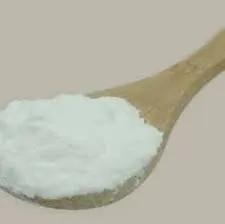The Versatility and Uses of Ammonium Thiocyanate
Ammonium thiocyanate, with the chemical formula NH4SCN, is an inorganic compound that has garnered significant attention in various scientific and industrial applications. Its unique properties make it suitable for diverse uses, ranging from analytical chemistry to agriculture.
Chemical Properties and Structure
Ammonium thiocyanate consists of ammonium cations (NH4+) and thiocyanate anions (SCN−). It appears as a white crystalline solid that is highly soluble in water. The compound has a relatively low melting point of about 150 °C, and upon heating, it decomposes into ammonia, hydrogen sulfide, and carbon disulfide. Its solubility in water and its ability to form hydrogen bonds enhance its chemical functionality, making it a valuable reagent in various chemical processes.
Applications in Analytical Chemistry
In analytical chemistry, ammonium thiocyanate is often employed as a reagent in the determination of metal ions. The compound forms stable complexes with various transition metals, which can be used to identify and quantify these metals through spectrophotometric methods. For instance, it is particularly beneficial in the analysis of iron ions, where the formation of a colored complex allows for easy detection and measurement. Additionally, ammonium thiocyanate is utilized in gravimetric analysis, where it helps precipitate metal thiocyanates that can be filtered and weighed.
Role in Agriculture
thiocyanate ammonium

Ammonium thiocyanate also plays a crucial role in agriculture, particularly as a source of nitrogen and sulfur for plants. The compound can be used as a fertilizer, providing essential nutrients that promote healthy plant growth. Its application can enhance soil fertility and improve crop yield, especially in nutrient-deficient soils. Furthermore, due to its properties, it acts as a herbicide and pest repellent, offering farmers an effective method to manage unwanted plant growth and pests without resorting to more harmful chemical alternatives.
Industrial Applications
The industrial applications of ammonium thiocyanate are vast. It is commonly used in the production of synthetic fibers and plastics, where it acts as a stabilizing agent. The compound is integral to the production of rayon and other materials, where it facilitates the processing and manipulation of cellulose. Moreover, ammonium thiocyanate is employed in the manufacture of certain dyes and pigments, which rely on its ability to form complexes that give rise to vivid colors.
Environmental Considerations
While ammonium thiocyanate is a useful compound, its impact on the environment should not be overlooked. The potential for toxicity in high concentrations necessitates careful handling and application. Agricultural runoff containing thiocyanate can lead to contamination of water sources, which can adversely affect aquatic life and drinking water quality. As such, monitoring and regulation of thiocyanate use in agriculture and industry are crucial to mitigate environmental risks.
Conclusion
In summary, ammonium thiocyanate is a versatile compound with numerous applications across various fields, including analytical chemistry, agriculture, and industry. Its ability to form complexes, coupled with its role as a nutrient source, positions it as a valuable resource in modern science and technology. However, responsible use and environmental management are essential to ensure that the benefits of this compound can be enjoyed without compromising ecological integrity. As research continues, new applications may emerge, further solidifying ammonium thiocyanate's place in both chemical and agricultural domains.

